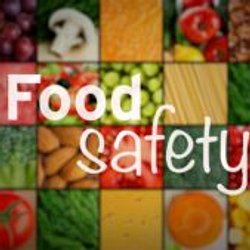I. Introduction
A. Overview of Food Safety Training
Food safety training equips individuals with essential knowledge and skills to handle food safely and prevent contamination. It covers a range of topics, including personal hygiene, safe food preparation, proper storage techniques, and temperature control. This training is crucial for anyone involved in food handling, from kitchen staff to food service managers. By implementing these practices, food safety training helps ensure that food is prepared and served in a manner that protects public health and adheres to regulatory standards.
B. Importance of Food Safety Training
Food safety training is critical for safeguarding public health and ensuring compliance with industry regulations. Proper training helps prevent foodborne illnesses by teaching employees the correct procedures for handling, preparing, and storing food. It also minimizes the risk of cross-contamination and ensures that food safety protocols are followed consistently. By investing in food safety training, businesses not only protect consumers but also enhance their reputation, reduce liability, and avoid costly fines associated with non-compliance and food safety violations.
C. Benefits of Effective Food Safety Training
Effective food safety training offers numerous benefits, including improved food handling practices and reduced risk of contamination. It enhances employees’ understanding of hygiene standards, proper food storage, and cooking temperatures, leading to safer food production. Additionally, well-trained staff contribute to increased consumer trust and satisfaction. Businesses that invest in comprehensive training programs also benefit from fewer food safety incidents, lower risk of regulatory fines, and a stronger reputation in the industry, ultimately supporting long-term success and growth.
II. Key Components of Food Safety Training
A. Understanding Foodborne Pathogens
Understanding foodborne pathogens is a crucial component of food safety training. This involves learning about various microorganisms such as bacteria, viruses, and parasites that can cause foodborne illnesses. Training covers how these pathogens are transmitted through food, their symptoms, and methods for preventing their spread. Knowledge of pathogens helps employees recognize potential risks and implement effective measures to ensure food safety, reducing the likelihood of contamination and protecting consumer health.
B. Proper Food Handling Practices
Proper food handling practices are essential for maintaining food safety and preventing contamination. Training covers key practices such as personal hygiene, proper handwashing, avoiding cross-contamination, and correct food storage techniques. Employees learn how to handle raw and cooked foods separately, use clean utensils, and monitor temperatures to ensure food is cooked and stored safely. Adhering to these practices helps prevent foodborne illnesses and ensures that food is prepared and served in a safe and hygienic manner.
C. Cleaning and Sanitization Procedures
Cleaning and sanitization are vital for maintaining a safe food handling environment. Training includes procedures for effectively cleaning and sanitizing food contact surfaces, equipment, and utensils. It covers the use of appropriate cleaning agents, proper sanitation techniques, and the importance of regular cleaning schedules. Ensuring that surfaces are properly sanitized helps prevent the spread of harmful microorganisms and maintains a hygienic kitchen environment, thereby reducing the risk of foodborne illnesses and contamination.
III. Food Safety Regulations and Standards

A. Overview of Regulatory Bodies
Understanding the role of regulatory bodies is essential for compliance with food safety standards. Agencies such as the FDA (Food and Drug Administration), USDA (United States Department of Agriculture), and local health departments set regulations and guidelines for food safety. These organizations oversee the enforcement of food safety laws, conduct inspections, and provide resources for businesses to ensure they meet industry standards. Familiarity with these bodies helps businesses stay informed and compliant with current food safety regulations.
B. Compliance with Food Safety Standards
Compliance with food safety standards is critical for ensuring the safety and quality of food products. Training covers key regulations, such as HACCP (Hazard Analysis and Critical Control Points) and GMP (Good Manufacturing Practices), which provide a framework for identifying and managing potential food safety hazards. Businesses must implement these standards to comply with legal requirements, prevent contamination, and maintain high levels of food safety. Regular reviews and updates to practices ensure ongoing compliance and adherence to industry guidelines.
C. Documentation and Record-Keeping
Proper documentation and record-keeping are vital for tracking food safety practices and ensuring regulatory compliance. Training emphasizes the importance of maintaining accurate records of food handling procedures, temperature logs, and sanitation activities. These records provide evidence of compliance with food safety standards and help identify potential issues. Effective documentation supports traceability, aids in internal audits, and ensures that businesses can demonstrate their commitment to food safety to regulatory bodies during inspections and reviews.
V. Implementing a Food Safety Training Program
A. Developing a Training Plan
Developing a training plan involves assessing the specific food safety needs of a business and creating a structured program to address them. The plan should outline objectives, training topics, and schedules. It involves identifying key areas for training, setting goals, and determining the resources required. A well-developed plan ensures that all employees receive comprehensive training and understand their responsibilities in maintaining food safety standards.
B. Selecting Training Materials and Resources
Selecting appropriate training materials and resources is crucial for effective food safety education. This includes choosing textbooks, online modules, videos, and handouts that align with the training objectives. Materials should be up-to-date, relevant, and engaging to facilitate learning. Utilizing a variety of resources ensures that the training program addresses different learning styles and provides comprehensive coverage of essential food safety topics.
C. Evaluating Training Effectiveness
Evaluating training effectiveness involves assessing how well the training program meets its objectives and improves food safety practices. This can be done through quizzes, practical assessments, and feedback surveys. Regular evaluation helps identify areas for improvement, measure knowledge retention, and ensure that training translates into better food handling practices. Continuous assessment and feedback are essential for refining the training program and ensuring its ongoing relevance and impact.
VIII. Future Trends in Food Safety Training
A. Emerging Technologies and Innovations
Emerging technologies, such as virtual reality and AI, are revolutionizing food safety training. These innovations offer immersive learning experiences, allowing trainees to simulate real-life scenarios and practice food safety protocols in a virtual environment. Advanced analytics and interactive tools enhance training effectiveness by providing detailed feedback and personalized learning paths. Keeping up with these trends helps businesses stay ahead in food safety practices and improve overall training outcomes.
B. Updates to Food Safety Regulations
Food safety regulations are continually evolving to address new risks and improve standards. Recent updates may include stricter guidelines, new compliance requirements, or revised best practices. Staying informed about these changes is crucial for maintaining compliance and ensuring that food safety practices are up-to-date. Businesses should regularly review regulatory updates and adjust their training programs to incorporate the latest standards and maintain adherence to industry requirements.
C. Evolving Industry Needs and Expectations
As the food industry evolves, so do the needs and expectations for food safety training. Trends such as increased consumer awareness, globalization, and new food technologies require businesses to adapt their training programs. Training must address these evolving challenges by incorporating new content and practices. Understanding industry trends and adjusting training accordingly helps businesses meet current expectations, enhance food safety measures, and remain competitive in a dynamic market.
IX. Conclusion
A. Recap of the Importance of Food Safety Training
Food safety training is essential for protecting public health and ensuring compliance with regulations. It equips individuals with the knowledge and skills needed to handle food safely, prevent contamination, and reduce the risk of foodborne illnesses. Effective training contributes to a safer food environment, improved business operations, and greater consumer trust, highlighting its critical role in maintaining high standards in food handling and preparation.
B. Encouragement to Invest in Food Safety Training
Investing in food safety training is a proactive measure that benefits both businesses and consumers. By prioritizing comprehensive training programs, businesses can enhance food safety practices, reduce risks, and improve overall quality. Commitment to training not only ensures compliance with regulatory standards but also fosters a culture of safety and excellence. Encouraging investment in food safety training supports long-term success and helps build a positive reputation in the food industry.
C. Final Thoughts on Maintaining Food Safety Standards
Maintaining food safety standards requires ongoing commitment and vigilance. Regular updates to training programs, adherence to evolving regulations, and continuous monitoring are essential for ensuring consistent compliance and high-quality food handling. Businesses must stay proactive in addressing new challenges and integrating best practices. By prioritizing food safety, companies can safeguard public health, uphold industry standards, and achieve lasting success in a competitive market.

No Responses